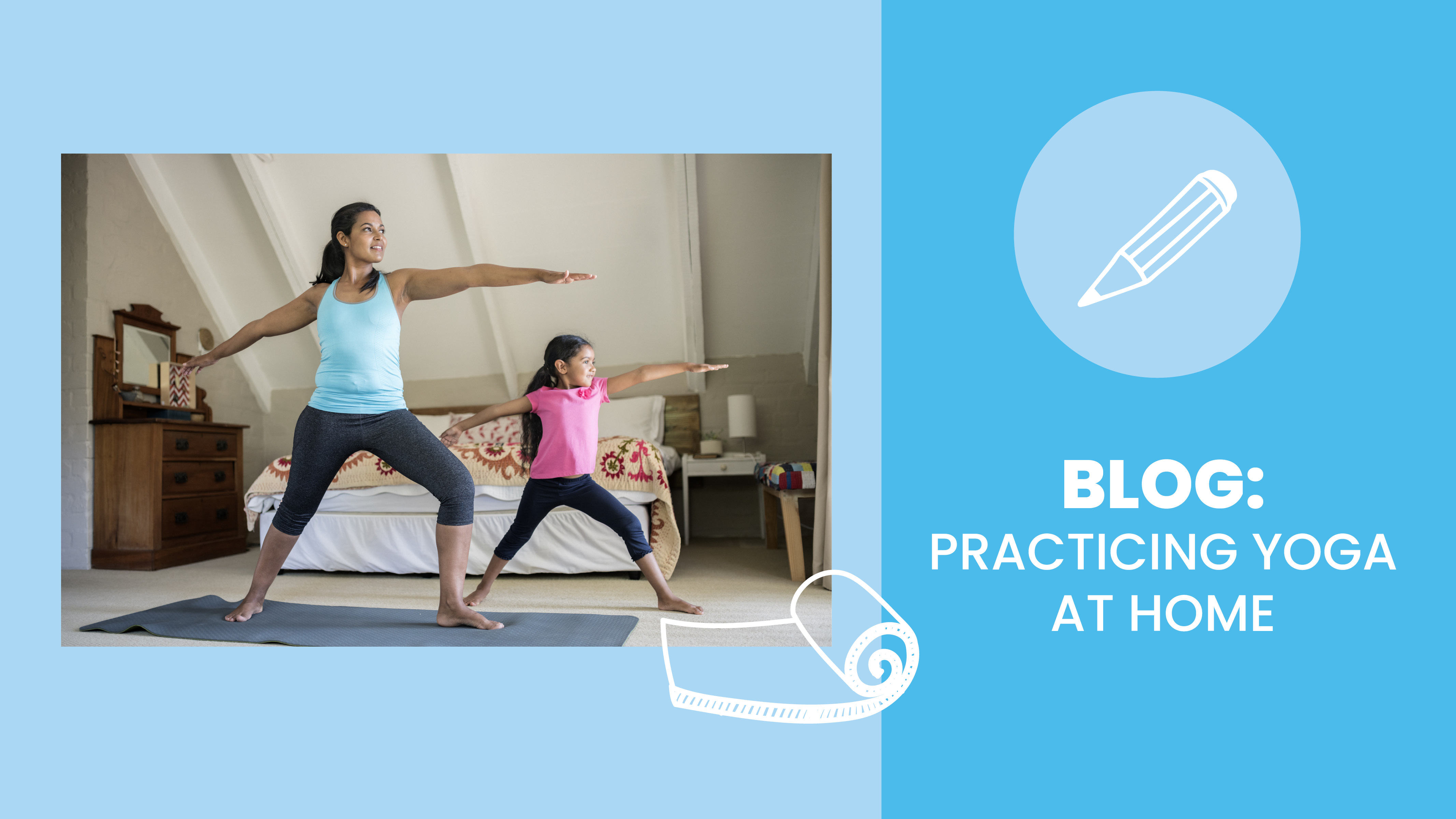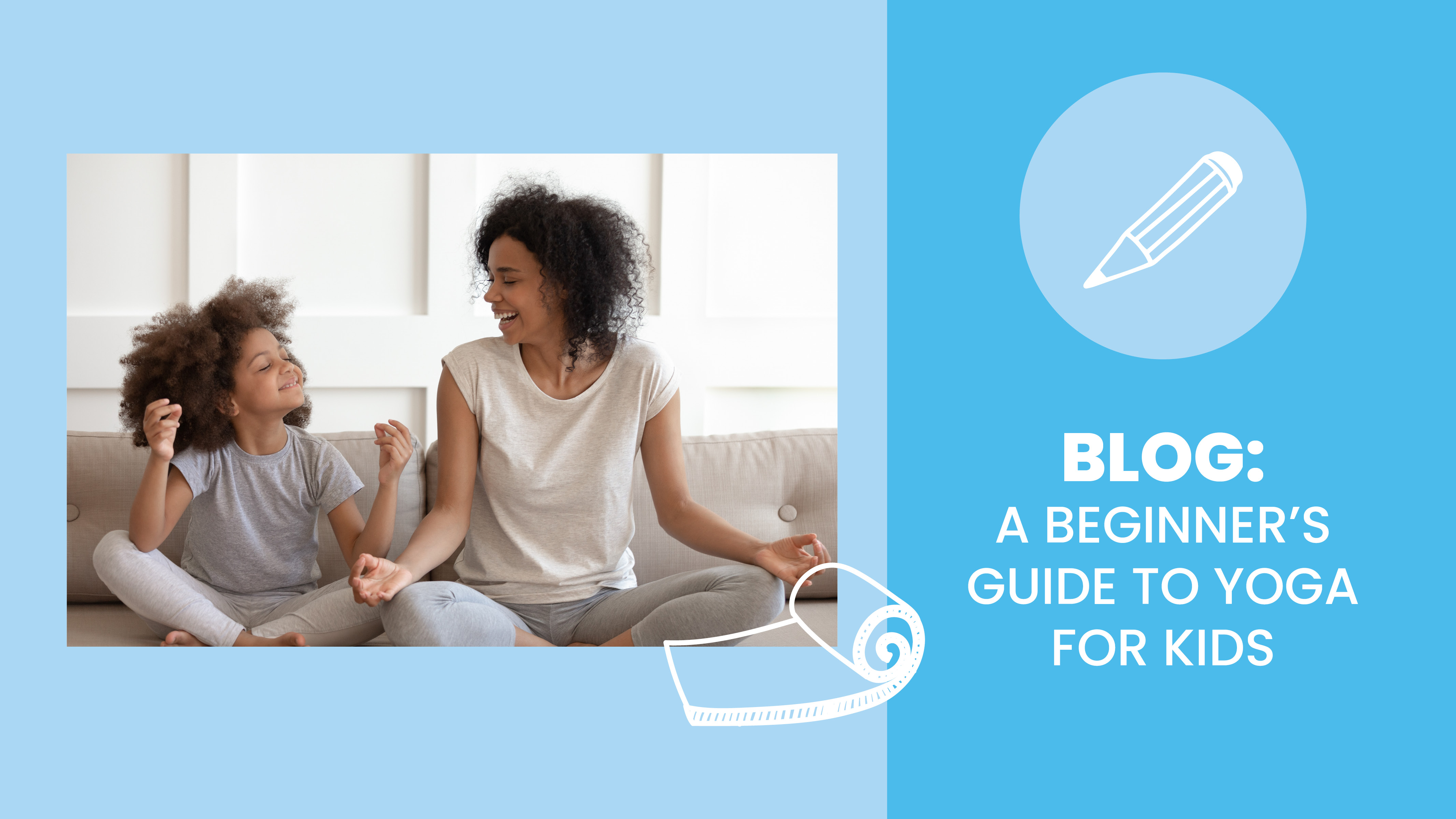Bodies and brains benefit from regular physical activity and keeping kids moving and recharging while they’re at home is important. Yoga helps bodies and brains recharge by moving through poses while breathing mindfully. This pairing of movement and breathing enhances mental, physical, and emotional health.
But why is practicing yoga in the home so beneficial to your child? We talked with Katrina Lien, a certified children’s yoga instructor, and she explained that along with enhancing overall health, yoga can:
- Improve sleep quality
- Increase self-esteem
- Lower stress
- Increase muscle and strength endurance
- Improve emotional regulation
- Enhance body awareness and balance
- Boost awareness of overall wellness and mental health
Even with all these known benefits, it can be hard to know when to fit yoga into a busy schedule at home. Here are a few of Katrina’s top recommendations:
- Morning Mantra Yoga: Invite your child to get in a comfortable position. Introduce the activity by telling them that they will explore different ways to recharge their body and brain with yoga. Pick 1-3 yoga cards from packs like Grow Your Flow or fitFlow and use instructions to lead your child through the movements. For an add-on, pair each pose with a positive affirmation to help build confidence. Use phrases like, “I am strong. I am brave. I am me,” to get started.
- Wind Down Before Sleep. Yoga can be used as a great tool to help prepare the body and brain for rest, relaxation, and recovery after a long day. Practice a few poses to stretch out before bed! If you’re looking for a fun way to add storytelling to your yoga practice, check out A Trip to the Zoo: Animal Yoga Poses and Breathing Exercises.
- Encourage Deep Breathing Skills as a Coping Strategy: Awareness of your breathing is a key part of yoga and deep breathing is a great skill for all kids to learn. Try to incorporate some deep breathing anytime your child feels stressed, overwhelmed, or is experiencing some big emotions. Here are some of our favorites to get you started:
- Lion Breath: Sit or kneel. Make sure your head is looking forward, your spine is tall, your chest is high, and your shoulders are back. Close your eyes. Take a deep breath in through your nose. Open your mouth, eyes wide, and let your breath out with a loud "ROAR."
- Whale Breath: Stand or sit tall and take a deep breath in, hold your breath while you count to 5. Tilt your head up, pretend you’re peeking out of the water, and blow all of the air out.
- Dragon Breath: Sit or kneel. Make sure your head is looking forward, your spine is tall, your chest is high, and your shoulders are back. Next, close your eyes. Keep your mouth closed. Breathe in slowly through your nose and silently count to 8. Hold that air in your body while you silently count to 2. As you let the air out, open your mouth wide and stick out your tongue while you count to 5. Imagine you are releasing fire like a dragon.
Katrina emphasizes that no matter how you practice yoga at home, remember to use encouragement and positivity - there is no perfect way to practice yoga. The goal is accomplished if your child is moving and having a positive experience!
Are you and your family ready to start practicing yoga to see the benefits first-hand? If you’re brand new to yoga, check out our Beginner’s Guide to Yoga for Kids blog for more resources and tips on getting started.
If you’re a teacher or educator and want to implement yoga into your classroom, check out our article here.
Ready for More? You Might Also Like:
Animal Breathing Techniques Video


